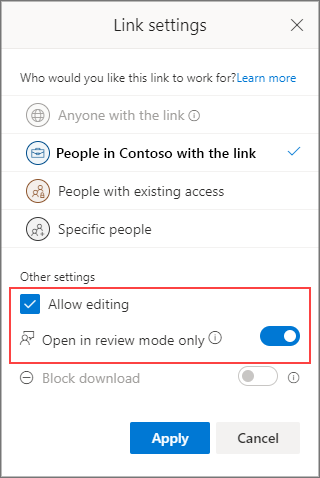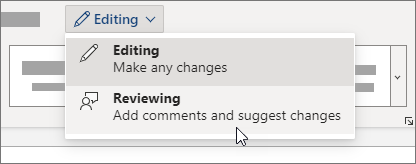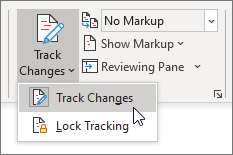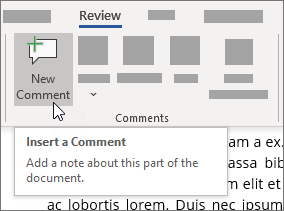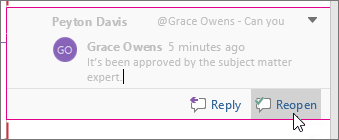
Working with a team
Working in Word with multiple authors is an opportunity to combine the efforts of several contributors who might be widely separated from each other by location or time zones—even on opposite sides of the world.
You can share a document across multiple platforms such as Windows, MacOS, iOS, and the web. All contributions to the document are saved in real time to a single file in OneDrive. There is only one version, so the changes multiple authors make are always in sync.
Preparing a document for sharing
When you share a document with multiple authors, you give them permission to make changes and insert comments. To learn how to share a document, see Share OneDrive files and folders.
When you share a document, be sure to select Allow editing to let the people you're sharing with make changes to it. Otherwise, they can only read the document.
If you allow editing, you can also ensure that the changes other authors make will be tracked. To do this, when you share the document, turn on Open in review mode only.
Important: Open in review mode is currently supported only in Word for Web. When you share a document, people will receive a link that opens the document in Word for Web. If they open the document in Word for the desktop, they'll see a yellow banner across the top of the document telling them that they can only edit the document in Word for web.
Giving feedback
Feedback is essential to any team effort. In Word, you can give feedback to fellow authors in two ways: By inserting comments that are tied to a specific place in the document or by directly making tracked changes to the text.
Using Reviewing in Word for web
When you put yourself in Reviewing in Word for web, changes are tracked and other users can see your additions to the document.
Use Track Changes in Word for desktop or iOS
If you're working in Word for desktop or iOS, make sure you have Track Changes on.
For more information about working with Track Changes, see Track changes in Word.
Insert comments
Use comments to ask questions and make suggestions or corrections without changing the text. Comments refer to a specific place in the document that you choose by selecting a section of text or simply by clicking or tapping in the document. To learn how to insert comments in Word for Windows or web, see Insert or delete a comment. For Word for MacOS, see Insert, delete, or change a comment.
When you insert or reply to a comment, you can use an @mention in Microsoft 365 to address a specific author. To learn how to use an @mention, see Use @mention in comments to tag someone for feedback.
When you reply to a comment, you begin a thread that all authors can see and respond to in real time, like a chat session. Using an @mention in the thread doesn't exclude anyone, it just calls out the comment to the attention of that person and notifies them by email that there's a comment or reply for them.
Responding to feedback
The feedback you receive will be comments and tracked changes.
Resolve comments
When someone inserts a comment in a document, you can reply to it, resolve it, or delete it. For more information about replying to a comment, see Reply to a comment.
After you resolve a thread, it remains in the document until you delete it, but is inactive unless someone reopens it.
Delete comments
After you've resolved or replied to any comments, you can clean up the document by deleting them. When you delete a comment, it's gone for good, so it's best to keep comments around until you're finalizing the document. Resolved comments only appear in the Comments pane.
For more information about deleting comments, see Track changes in Word or Delete a comment.
Resolve tracked changes
You resolve tracked changes by either accepting or rejecting them. For more information about working with Track Changes, see Track changes in Word.

